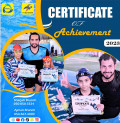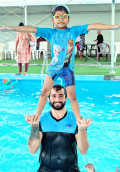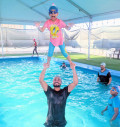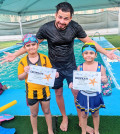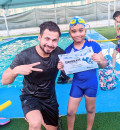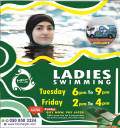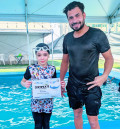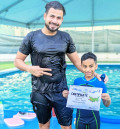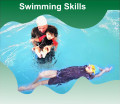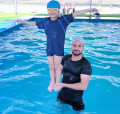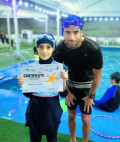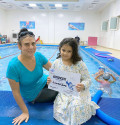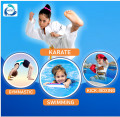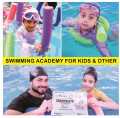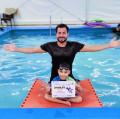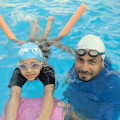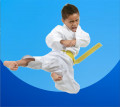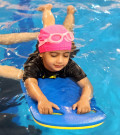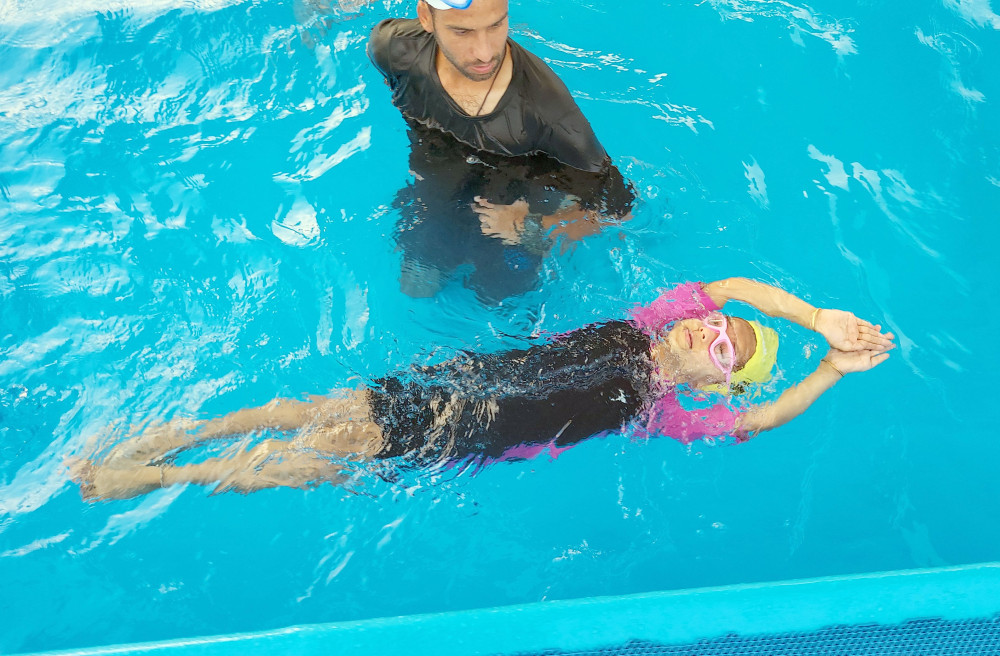
Swimming for Beginners Easy Steps to Dive Into the Pool
2024-02-22 - swimmingSwimming is not only a refreshing recreational activity but
also an essential life skill. If you're a beginner looking to take the plunge
into the world of swimming, you've come to the right place. In this
comprehensive guide, we'll walk you through everything you need to know to
start swimming confidently and enjoyably.
Benefits of Swimming
Before we dive into the technical aspects, let's explore why
swimming is a fantastic activity for beginners. Firstly, swimming is a
full-body workout that engages all major muscle groups, providing an excellent
cardiovascular exercise. Moreover, it's a low-impact activity, making it
suitable for individuals of all ages and fitness levels. Additionally, swimming
helps improve flexibility, coordination, and posture while enhancing lung
capacity and overall endurance.
Choosing the Right Swimming Gear
Before you hit the pool, it's essential to have the right
gear. Here's a breakdown of the essential swimming equipment for beginners:
Swimwear
Opt for comfortable swimwear that allows freedom of
movement. A well-fitted swimsuit or swim trunks are ideal for beginners.
Goggles
Invest in a pair of quality goggles to protect your eyes
from chlorine and ensure clear vision underwater.
Swim Cap
While optional, a swim cap can help keep your hair out of
your face and reduce drag, especially for individuals with longer hair.
Getting Started: Basic Swimming Techniques
Now that you have your gear sorted, it's time to learn some
basic swimming techniques to get started:
Floating
Mastering the art of floating is crucial for beginners.
Practice lying on your back and stomach while keeping your body relaxed and
buoyant.
Breathing Techniques
Learn proper breathing techniques by inhaling through your
mouth and exhaling through your nose or mouth while your face is submerged in
water.
Kicking Techniques
Focus on kicking from your hips rather than your knees for
efficient propulsion. Keep your legs straight but relaxed, and maintain a
steady rhythm.
Arm Movements
Coordinate your arm movements with your breathing,
alternating between strokes to propel yourself forward effectively.
Building Confidence in the Water
Building confidence in the water is a gradual process. Start
by gradually venturing into deeper waters while practicing your floating and
basic swimming techniques. Remember to stay calm, breathe steadily, and trust
in your abilities.
Learning Different Strokes
As you become more comfortable in the water, you can start
learning different swimming strokes. Here are four primary strokes to master:
Freestyle
The freestyle stroke, also known as the front crawl, is the
most common and fastest swimming stroke. Focus on a continuous arm motion and
rhythmic breathing to maintain momentum.
Backstroke
The backstroke involves swimming on your back while
performing alternating arm movements and flutter kicks. Keep your body aligned
and use your arms to propel yourself backward.
Breaststroke
The breaststroke is characterized by simultaneous arm
movements and a frog-like kick. Coordinate your breathing with your arm strokes
and maintain a streamlined body position.
Butterfly
The butterfly stroke is one of the most challenging but
rewarding swimming techniques. It involves a simultaneous dolphin kick and butterfly
arm motion, requiring strength, coordination, and timing.
Improving Endurance and Stamina
As you continue to practice and refine your swimming skills,
focus on gradually increasing your endurance and stamina. Set realistic goals
and challenge yourself to swim longer distances or complete more laps with each
session.
Safety Tips for Beginner Swimmers
Safety should always be a top priority when swimming,
especially for beginners. Here are some essential safety tips to keep in mind:
Never swim alone; always swim with a buddy or under the
supervision of a lifeguard.
Stay within your comfort zone and avoid venturing into deep
waters until you're confident in your abilities.
Familiarize yourself with pool rules and safety guidelines,
including proper diving techniques and designated swimming areas.
Learn how to recognize and respond to signs of distress or
exhaustion, such as cramps or shortness of breath.
Overcoming Common Challenges
It's natural to encounter challenges and setbacks when
learning to swim. Whether it's overcoming fear of water, mastering a new
stroke, or building endurance, remember that progress takes time and patience.
Don't be afraid to seek guidance from experienced swimmers or instructors and
celebrate each milestone along the way.
Seeking Professional Instruction
If you're struggling to make progress on your own, consider
enrolling in swimming lessons or seeking guidance from a certified instructor.
Professional instruction can provide personalized feedback, tailored workouts,
and invaluable tips to help you improve your technique and confidence in the
water.
Setting Realistic Goals
Setting specific, measurable, and achievable goals is
essential for staying motivated and tracking your progress. Whether it's
mastering a new stroke, swimming a certain distance, or participating in a swim
meet, establish clear objectives and work towards them consistently.
Incorporating Swimming into Your Fitness Routine
Swimming is a versatile activity that can be incorporated
into your fitness routine in various ways. Whether you prefer swimming laps for
cardio, participating in water aerobics classes for strength training, or
simply enjoying a leisurely swim to unwind, find a routine that suits your
goals and lifestyle.
Staying Consistent and Persistent
Consistency is key when it comes to improving your swimming
skills. Make swimming a regular part of your routine and commit to practicing
regularly, even on days when you don't feel like it. Stay persistent, stay
positive, and don't get discouraged by setbacks or plateaus.
Tracking Progress and Celebrating Achievements
Keep track of your swimming progress by setting milestones
and recording your workouts. Celebrate each achievement, whether it's swimming
a longer distance, mastering a new stroke, or simply feeling more confident in
the water. Remember that every step forward is a step closer to reaching your
goals.
Conclusion
Embarking on a journey to learn swimming as a beginner can
be both exciting and rewarding. By following the easy steps outlined in this
guide, you'll gradually build confidence, improve your technique, and discover
the joy of swimming. Remember to prioritize safety, stay patient with yourself,
and enjoy the process of learning and growing in the water.







.jpg)




















